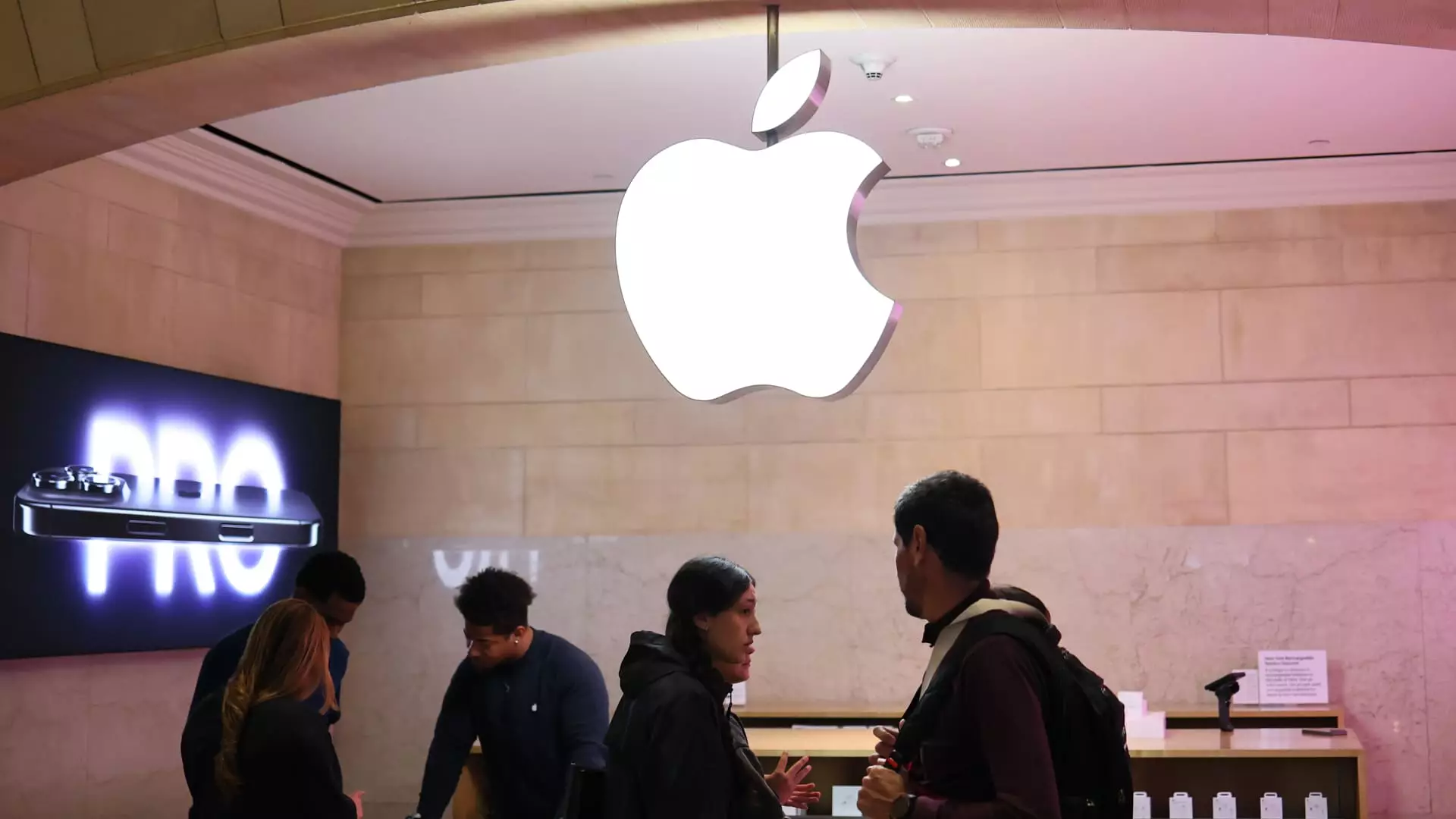The recent temporary suspension of Donald Trump’s reciprocal tariffs may seem like a reprieve to some businesses, but for Apple, the largest company in the United States, this is far from a panacea. With a staggering 145% cumulative tariff on Chinese goods, the Cupertino titan is still grappling with severe implications for its operations. Though the company has been trying to diversify its supply chain for years, it remains critically reliant on China, with approximately 80% of the 77 million iPhones shipped to the U.S. last year originating from the Middle Kingdom. This over-dependence poses a serious threat to its profitability and sustainability, rendering Apple’s situation not just precarious, but downright alarming.
One fervent analyst, Dan Ives from Wedbush Securities, likens Apple’s current predicament to having their boat flipped over in the ocean without life rafts—a vivid metaphor that emphasizes the fragility of their supply chain. The ongoing tariffs have forced Apple into a corner, one where the only apparent solution may be to elevate prices on iPhones in response to the tariffs. However, should this occur, the company risks alienating its price-sensitive consumer base, which could severely hurt sales. The dual challenge of maintaining margins while managing public perception is a weighty dilemma for Apple’s leadership.
Stockpiling vs. Future Production: A Calculated Gamble
Amid the chaos, speculation has arisen that Apple may have taken to stockpiling iPhones to absorb the shock of tariffs before they hit. This strategy, while seemingly savvy, is fraught with risks. Stockpiled inventory can only last so long, and as demand swells in anticipation of price hikes, the question arises: how effective is this strategy in the long term? Experts indicate that Apple’s plan to shift production to India is ambitious but slow-moving; the reality is that it requires a multi-year commitment to build up sufficient manufacturing capacity.
The irony is richly thick; as Apple tries to mitigate Chinese tariff exposure by ramping up production in India, the complexities surrounding tariffs on Indian goods could impose unexpected burdens. This raises the thorny issue of whether the strategy is sustainable or simply a temporary fix of a ticking time bomb. Even with plans afoot to relocate some iPhone production, analysts are uncertain if India can truly fill the gap without falling prey to its own set of challenges, including potential tariffs and geopolitical instability.
Appeals, Exemptions, and a Divided Future
One of the more intriguing avenues Apple might pursue is to appeal to the Trump administration for a tariff exemption—an endeavor that could potentially alleviate some pressure. Daniel Newman, CEO of The Futurum Group, points out that Apple’s a significant $500 billion commitment to the U.S. could make it a contender for special concessions. However, the question begs: will this be enough to stave off the impending financial crisis that looms over the company?
Past trends offer a mixed bag—while Apple may have received some relief during the first Trump administration, the broader landscape is far more complicated now. Both sides of the political spectrum are aware that winning public trust is paramount; thus, negotiations may not end up favoring Apple as optimistically predicted. Compounding the uncertainty is Trump’s unwavering stance that Apple can manufacture iPhones domestically, a claim that raises the specter of exorbitant prices—estimates put the cost of a U.S.-made iPhone around $3,500. This reality provokes a tantalizing but disquieting question: will consumers bear the burden of these costs?
Echoes of Uncertainty: A Broader Economic Landscape
The implications go beyond Apple. The ongoing U.S.-China trade turmoil reverberates through the entire tech industry, casting a shadow over innovation and competition. While Apple struggles behind the scenes, other companies could seize this opportunity to capture market share with more adaptable supply chains outside of China. The world watches as the fragile fabric of international trade hangs in the balance, with manufacturers across various industries grappling with similar dilemmas.
Ultimately, Apple’s immediate future rests on a precarious cliff of trade wars and tariff negotiations. As the company confronts these multi-faceted challenges, the political maneuverings and economic implications serve as a stark reminder that in a globalized economy, no corporation exists in isolation. What happens next will shape not only Apple’s fate but also the trajectory of countless businesses caught in the crosshairs of geopolitical uncertainty.

